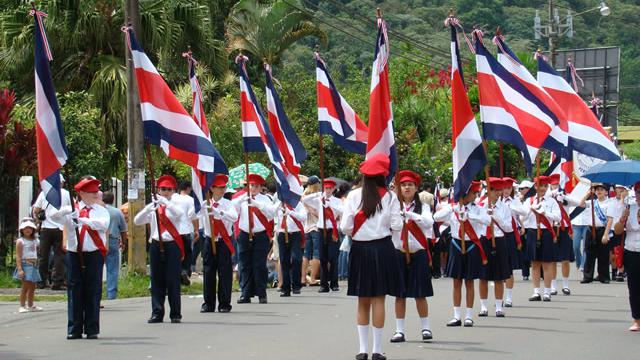In the heart of Central America, nestled between the Pacific Ocean and the Caribbean Sea, lies a nation that embodies the spirit of peace, democracy, and unity. Costa Rica, often referred to as the “Rich Coast,” boasts not only breathtaking natural beauty but also a rich cultural heritage. One of the most significant and cherished celebrations in this vibrant country is Independence Day. For Ticos, as Costa Ricans are affectionately known, this day is more than just a national holiday – it’s a testament to their unique history and the enduring values that shape their culture.
A Brief History
Costa Rica’s path to independence was unlike that of many of its Central American neighbors. While most nations in the region fought bloody battles against Spanish colonial rule, Costa Rica achieved its independence through peaceful means. On September 15, 1821, a letter from the Spanish crown announcing the end of Spanish rule arrived in the city of Cartago. The news was met with relief and joy, and the people of Costa Rica celebrated their newfound freedom without bloodshed.
The Significance of September 15th
Each year, September 15th marks the beginning of Costa Rica’s Independence Day celebrations. The day is filled with patriotic fervor, cultural displays, and a deep sense of pride in their history and identity. Schools, communities, and towns across the country participate in parades, dances, and music performances. The national colors of blue, white, and red adorn the streets and buildings, and the air is filled with the sweet sounds of marimba music and traditional folk dances.
For Ticos, September 15th is more than just a day off work or school. It is a reminder of their ancestors’ commitment to peace and their ability to resolve conflicts without resorting to violence. This emphasis on peaceful coexistence has made Costa Rica a beacon of stability and democracy in a region that has faced its share of challenges.
Cultural Significance
Independence Day celebrations in Costa Rica go beyond the historical aspect. They are a celebration of the nation’s rich cultural diversity. Ticos take great pride in their cultural heritage, which is a fusion of Indigenous, Spanish, and Afro-Caribbean influences. The day offers a chance for people of all backgrounds to come together and celebrate their shared identity as Costa Ricans.
Traditional foods like gallo pinto (a delicious rice and bean dish), tamales, and empanadas are enjoyed by families and friends. Traditional clothing, such as the brightly colored dresses worn by women, adds to the festive atmosphere. The traditional dance, “El Punto Guanacasteco,” is often performed with intricate footwork and colorful costumes, further showcasing the nation’s cultural richness.
A Symbol of Unity
Independence Day in Costa Rica is not just a celebration of the past; it is a symbol of the unity and commitment to peace that continues to define the nation. In a world where conflicts often make headlines, Costa Rica’s peaceful path to independence and its ongoing dedication to demilitarization send a powerful message about the importance of diplomacy and cooperation.
Costa Rica’s Independence Day is a unique celebration that encapsulates the nation’s rich history, cultural diversity, and commitment to peace. For Ticos, it is a day of immense pride and a reminder of the values that define their nation. As the rest of the world looks on, Costa Rica’s celebration of independence serves as a shining example of how a commitment to peace and unity can shape a nation’s destiny. Pura Vida, indeed!






